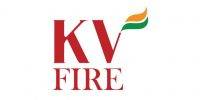 This article explains the way mineworkers negotiated workplace hazards and articulated their ideas of safety.
This article explains the way mineworkers negotiated workplace hazards and articulated their ideas of safety.
Mineworkers increasingly attained mining sense and made use of it, thereby surviving terrible working conditions and seeking to mend the accident-control mechanism.
The miners’ unions strove to push the safety regime beyond voluntary codes of discipline and practical and technological solutions. They invested in legislative disciplining and sought informed safety-supervisory controls. They got involved in ‘civic engagement’ with agreeable investigators and legislators within the colonial context and afterwards. Confronted with the limits of such measures, the rank-and-file moved on, from the latter half of the 1950s to direct action in the very mining faces, thereby insisting on the right to withdrawal from danger.
The historiographies which argued that Indian workers knowingly acquiesced to perilous mining to maintain livelihoods inadequately lend us the safety ideas shared and action at protection prevention undertaken by mineworkers. This article shows that Indian mineworkers reinforced the safety campaign through their strategic manoeuvring in legislative and workplace struggles as did their counterparts in Britain and some other societies.
Introduction
This article analyses the ways in which miners negotiated the dangers in Indian coalmines and responded to the efforts of capital at establishing the connection between labour subordination and accident-control mechanism. Workers began to define their mining sense or safety skill over time, even when they knowingly risked their life and limb for the sake of output. The organized workers articulated safety ideas, which went beyond practical and technological solutions and voluntary codes of discipline; they emphasized the legislative mandate and a participatory accident-control mechanism. The focus on social insurance characterized the manner of their direct action over safety in the early period, that is, the early twentieth century. The industry saw campaigns of organized workers for the legitimate withdrawal of labour from unsafe workplaces from the 1950s onwards. The present study outlines the context in which the workers’ understanding of safety and endeavours at accident control came to be part of mining development.
Employers often described work hazards as ‘unavoidable’ geophysical and mechanical occurrences. Additionally, they argued that ‘illiterate’, ‘ignorant’ and ‘agriculturist’ mineworkers were frequently involved in ‘reckless’ and ‘misadventurous’ mining, thereby causing accidents.
 Several commentators have refuted the abovementioned managerial discourse on occupational risk and workers’ behaviour. Some find the short-sighted cost-minimization and profit-centred business consideration of employers to be responsible for workplace hazards. Others suggest that the coercive terms and conditions of employment led workers to risk-taking and faulty mining practices. The declining economic scenario and threats to employment also compelled workers to maintain a fatalistic stoicism and machismo attitude towards work hazards in some cases. In contrast, the paternalistic policy of the metal company in Cornwall reinforced a stance of silence among metal miners on their occupational health and safety and the state’s indifference.
Several commentators have refuted the abovementioned managerial discourse on occupational risk and workers’ behaviour. Some find the short-sighted cost-minimization and profit-centred business consideration of employers to be responsible for workplace hazards. Others suggest that the coercive terms and conditions of employment led workers to risk-taking and faulty mining practices. The declining economic scenario and threats to employment also compelled workers to maintain a fatalistic stoicism and machismo attitude towards work hazards in some cases. In contrast, the paternalistic policy of the metal company in Cornwall reinforced a stance of silence among metal miners on their occupational health and safety and the state’s indifference.
There are two diverging viewpoints regarding the conception of safety shared by workers, and the role played by their work–behaviour pattern on challenges to occupational health. First, workers knowingly risked their life and acquiesced to the pressure for the output. They showed an ‘economistic’ and ‘fatalistic’ outlook and machismo attitude, for they were the ‘ill-fed’, ‘ignorant’, ‘migrant’ and ‘ill-organized’. Hence, they sought only ‘ephemeral relief’ through desertions and petty compensation claims. Simeon further argues that mineworkers sometimes expressed repugnance against perilous methods but acquiesced. They learnt to remain foolish, which enabled them to feed their stomach under the ruling mining regime. Qadeer and Roy point out that although the labour union movement in India took up the demands for better living and working conditions, including the payment of compensation, it did not pay due attention to safety provisions and health care. Individual workers alone were the principal agents for redressal of whatever health and safety problems were resolved. Such viewpoints and the findings related to India, my study shows below, are insufficient in elaborating what safety knowledge was shared and prevention measures undertaken by mineworkers in the Indian coalfield of Jharia.
The second viewpoint brings to the fore the workers’ understanding of the ill-effects of work and their quotidian and political efforts at prevention. Textile workers in Lancashire and New England, shows Greenless, clearly recognized the work–health relationship between dust and respiratory problems (in their personal mode of illness), but not the longer-term health consequences until it was too late. They did not expect these risks to have long-term health consequences extending outside the factory walls. They devised individual as well as cooperative responses to mitigate the ill effects of the workplace, even though they were unable to have any organized health action for long-term prevention. Likewise, Douglas and Leger highlight the tacit safety knowledge possessed by mineworkers, which informed some of the workplace struggles over safety. Some others suggest that the organized political labour brought a sense of urgency to the safety campaign; for instance, in Britain from the mid-nineteenth century, in the USA from the turn of the twentieth century as well as in early twentieth century South Africa. Here, organized workers challenged the managerial discourse of blaming the carelessness of workers for workplace risk and sought remedial measures. Bloor highlights the combination of informal and formal actions undertaken by miners to ensure safety. Bufton and Melling, furthermore, draw attention to mineworkers’ civic engagement and the strategic manoeuvring and political accommodation made in their safety campaign in order to reduce workplace dangers.
 The particular ways in which formal and informal actions of workers would take place and feed into each other call for a context-specific enquiry. The present study takes the lead from a similar kind of recovery of the implicit knowledge and informal action shared by Indian workers. It suggests that the tacit [safety] skill of workers was neither pre-given nor stasis. The emergence and development of the mining sense among workers involved both didactic and autodidactic routes. Their mining sense mediated their ways of adaptation— quixotic and prudent—to the demands made by work relations. The understanding of workplace risk and safety conception shared by workers mediated their health-cum-safety action at the subterranean, quotidian level. This became a substructure for two different forms of safety struggles undertaken by the organized labourers. The pursuit of social insurance and regulation of workplace characterized the early phase. Subsequently, the quest for the withdrawal of labour from a hazardous workplace and the participatory safety mechanism took place. This shift occurred when mineworkers got efficaciously organized and secured a minimum earning, that is, when the loss of output, because of an unsure situation in the workplace, did not amount to their failure to meet the demand for output.
The particular ways in which formal and informal actions of workers would take place and feed into each other call for a context-specific enquiry. The present study takes the lead from a similar kind of recovery of the implicit knowledge and informal action shared by Indian workers. It suggests that the tacit [safety] skill of workers was neither pre-given nor stasis. The emergence and development of the mining sense among workers involved both didactic and autodidactic routes. Their mining sense mediated their ways of adaptation— quixotic and prudent—to the demands made by work relations. The understanding of workplace risk and safety conception shared by workers mediated their health-cum-safety action at the subterranean, quotidian level. This became a substructure for two different forms of safety struggles undertaken by the organized labourers. The pursuit of social insurance and regulation of workplace characterized the early phase. Subsequently, the quest for the withdrawal of labour from a hazardous workplace and the participatory safety mechanism took place. This shift occurred when mineworkers got efficaciously organized and secured a minimum earning, that is, when the loss of output, because of an unsure situation in the workplace, did not amount to their failure to meet the demand for output.
Working in the Coalmine
The production method adopted by the industry revealed how the mining world, while offering many livelihood opportunities, caused workplace risks and sapped the life energy of mineworkers (see Figures 1 and 2, and Table 1). At the Indian coalfield of Jharia, the industry adopted a production method which came to be disapprovingly known as ‘slaughter mining’, defined by the employment of untrained coalminers under a few trained supervisors. A productionist ethos, working under minimal safety essentials, and the handicraft-type labour process, also known as artisanal mining. It largely depended on the supply of cheap labour by oscillating migrants. The intermediary, known as the sirdar, recruited and controlled workers. The colliery owners made use of managing agencies and raising contractors, who had short-term interests in the industry and showed an urge for quick returns. The monopsonic clutch maintained by the railways, as the largest consumer of coal, and the limited investment on expensive, imported machinery in the colonial economy arrested the growth of the coal industry. The management sought voluntary codes of discipline and practical solutions more than a mechanical solution to ensure safety. All this proved conducive to ‘slaughter mining’.
Our findings contradict the employers’ discourse that mineworkers were ignorant, illiterate and/or agriculturists, and were hence reckless. Our discussion suggests that the historiographies which argue that Indian workers ‘knowingly acquiesced’ to unsafe mining and sought merely ‘ephemeral relief’ fail to sufficiently elaborate the understanding of workplace risk and safety ideas shared by workers and their strategic calculations in the related struggles. Indian mineworkers, indeed, strengthened the safety campaign through their strategic manoeuvring in legislative and workplace struggles as did their fraternity in Britain and elsewhere. They increasingly attained a mining sense and made use of it, thereby surviving the terrible working conditions, and seeking to mend the accident-control measures. The formation and function of their mining sense and safety-cum-health action were neither pre-given nor static. It was part of the industrialization process involving mineworkers’ particular ways of adaptation— whether quixotic or prudent— to the demands made by work relations. They maintained the trial-and-error principle and benefited from both autodidactic and didactic exercises.
The organized political workers put faith in legislative measures, going beyond the voluntary codes of discipline, and practical and technological solutions. They sought informed safety-supervisory controls, even while the common coal-workers defiantly asserted autonomy in the workplace. Their unions got involved in ‘civic engagement’ with such colonial, and later independent India’s, investigators and legislators who were agreeable to them. However, preoccupation with ‘social insurance’ dominated the safety-cum-health action undertaken by workers. Confronted with the limits of such measures owing to the scant cooperation from industrialists, the rank-and-file moved to direct action in the very mining faces, thereby insisting on the right to withdrawal from danger from the latter 1950s. Simultaneously, they agitated for the participatory safety mechanism. This shift in their safety consciousness and endeavours was itself a response to increasing opportunities for achieving financial security and reflected their growing awareness of broader public sympathy. This meant a call for bridging the gap between the new gains of mineworkers on the British coalmines, on the one hand, and, on the other hand, the ‘death pit’ in India.


















































